Last post I said I’d review schools of psychotherapy that promise to target addiction, and ACT and IFS were at the top of my list. I’ll get to these, but I thought I’d spread the net a bit wider. So I’m starting this series with a look at “psychodynamic” or psychoanalytic psychotherapy. I think the underlying concepts of this tradition are crucial for understanding and overcoming addiction.
Psychoanalysis (think Freud and his followers) is the mother of all psychotherapies. No matter what you’ve heard, no matter how much people scoff at penis envy and other outdated concepts, Freud was a 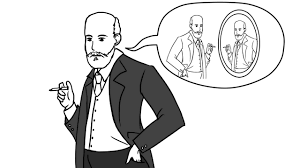 genius. He was the first (as far as I know) to develop a “talking cure” for serious emotional difficulties, and he was the first to bring the idea of unconscious wishes and motives into public parlance. Sure,
genius. He was the first (as far as I know) to develop a “talking cure” for serious emotional difficulties, and he was the first to bring the idea of unconscious wishes and motives into public parlance. Sure,  psychoanalysis — on the couch, four times a week, for fifteen years (?!) — hasn’t lived up to expectations, and I believe it’s correctly pushed aside by more focused, present-tense-oriented, and evidence-based treatment models.
psychoanalysis — on the couch, four times a week, for fifteen years (?!) — hasn’t lived up to expectations, and I believe it’s correctly pushed aside by more focused, present-tense-oriented, and evidence-based treatment models.
But its offspring, psychodynamic psychology, isn’t so easily ignored. So my goal for this post is to tell you how this approach tends to frame addiction and how it can help, directly or indirectly.
The person who first comes to mind (and to Google) when you put “psychoanalytic” and “addiction” in the same search is Lance Dodes. His 2015 book “The Sober Truth” purports to debunk 12-step methods as riding on bad science. I have mixed feelings about this book. If “Science”  with a capital S is to be our lodestone, then psychoanalysis doesn’t look so hot either. But, okay, Dodes is inspiring, he’s developed his methods over decades, he’s come down strongly on “resort” rehabs (great video!) like those spawning in Malibu, California. So I want to touch on his perspective.
with a capital S is to be our lodestone, then psychoanalysis doesn’t look so hot either. But, okay, Dodes is inspiring, he’s developed his methods over decades, he’s come down strongly on “resort” rehabs (great video!) like those spawning in Malibu, California. So I want to touch on his perspective.
This is how Dodes conceptualizes addiction, and it captures core features of the psychodynamic insight:
“[E]very addictive act is preceded by a feeling of helplessness or powerlessness (an overwhelming of the capacity to manage [one’s moods or feelings] without feeling emotionally flooded). Addictive behavior functions to repair this underlying feeling of helplessness. It is able to do this because taking the addictive action (or even deciding to take this action) creates a sense of being empowered, of regaining control over one’s emotional experience and one’s life. This reversal of helplessness may be described as the psychological purpose of addiction.”
Of course we know that this temporary “empowerment” leads to further helplessness, but the initial rush of self-determination is not to be denied. More broadly, psychodynamic approaches always look at present 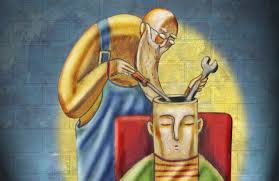 problems in the light of one’s early development. A realistic and increasingly popular spin-off of this position is the emphasis on childhood trauma, most famously highlighted by Gabor Maté, as featured in this clip. Whether a specific trauma is discovered or not, psychodynamic psychotherapy works to get people to rediscover and reinterpret their early struggles. The assumption is that addiction is an ineffective resolution to conflicts and defeats that were never fully accepted or resolved.
problems in the light of one’s early development. A realistic and increasingly popular spin-off of this position is the emphasis on childhood trauma, most famously highlighted by Gabor Maté, as featured in this clip. Whether a specific trauma is discovered or not, psychodynamic psychotherapy works to get people to rediscover and reinterpret their early struggles. The assumption is that addiction is an ineffective resolution to conflicts and defeats that were never fully accepted or resolved.
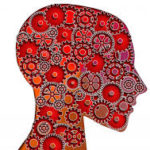 There are addiction treatment centres (e.g., Caron Treatment Centers) that expressly tap psychodynamic psychology in their approach. Other organizations combine aspects of psychodynamic psychology with other traditions. Andrew Tatarsky’s Center for Optimal Living in New York
There are addiction treatment centres (e.g., Caron Treatment Centers) that expressly tap psychodynamic psychology in their approach. Other organizations combine aspects of psychodynamic psychology with other traditions. Andrew Tatarsky’s Center for Optimal Living in New York  offers a harm-reduction approach that has psychodynamic psychology (and thus individual psychotherapy) built into it. I particularly like Tatarsky’s model (I spoke there and met him last June) because it is fundamentally empathic and humanistic, honouring individual differences and working with them.
offers a harm-reduction approach that has psychodynamic psychology (and thus individual psychotherapy) built into it. I particularly like Tatarsky’s model (I spoke there and met him last June) because it is fundamentally empathic and humanistic, honouring individual differences and working with them.
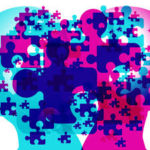 What’s most interesting to me is how psychodynamic ideas provide a foundation underlying many current schools of psychotherapy. With respect to addiction, ACT and IFS (my favourites — see last post) are all about bringing the past into the present and dealing with it. What seems to be missing from our lives? When did that start? Where does the depression come from? What messages do we repeatedly give ourselves that make us feel hopeless or despicable, so there seems little opportunity for relief except our addiction? Where do contradictory self-statements, like yes, this is what I want and I hate doing this! actually come from?
What’s most interesting to me is how psychodynamic ideas provide a foundation underlying many current schools of psychotherapy. With respect to addiction, ACT and IFS (my favourites — see last post) are all about bringing the past into the present and dealing with it. What seems to be missing from our lives? When did that start? Where does the depression come from? What messages do we repeatedly give ourselves that make us feel hopeless or despicable, so there seems little opportunity for relief except our addiction? Where do contradictory self-statements, like yes, this is what I want and I hate doing this! actually come from?
My own training in psychotherapy was entirely psychodynamic. I learned and practiced with children and adolescents, and my mentors were pretty classical by today’s standards. But what I do now, and what I think most 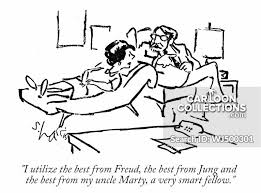 psychotherapists do, is blend different approaches, revising and refining our methods until we find what works best. And what works best appears at the interface of our own personality and knowledge base, our style of connecting with others, and the particular problems (in my case, mostly addiction) that come our way.
psychotherapists do, is blend different approaches, revising and refining our methods until we find what works best. And what works best appears at the interface of our own personality and knowledge base, our style of connecting with others, and the particular problems (in my case, mostly addiction) that come our way.
The problem with “pure” psychodynamic therapy is that it spends too long reinterpreting past events without connecting them intimately and acutely with current issues. As a result, pure psychodynamic therapy can take too long and never really get to the here-and-now. Yet the here-and-now mustn’t be put off when it comes to addiction. Addiction is self-perpetuating and it involves synaptic changes. Psychodynamic therapy ignores the fact that deep habits are neurally encoded and their momentum doesn’t derive from…any one thing. What’s more, people with addictions are truly miserable. They may live their lives on the cliff edge of self-destruction. So, for me, the psychodynamic approach works best as a platform on which to devise and enrich more direct interventions. Yes, we have to understand where we come from, but mostly as a means for understanding where we’re at now and where we’re going next.
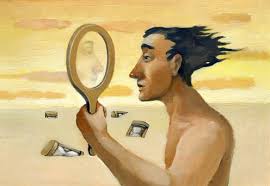
Leave a Reply